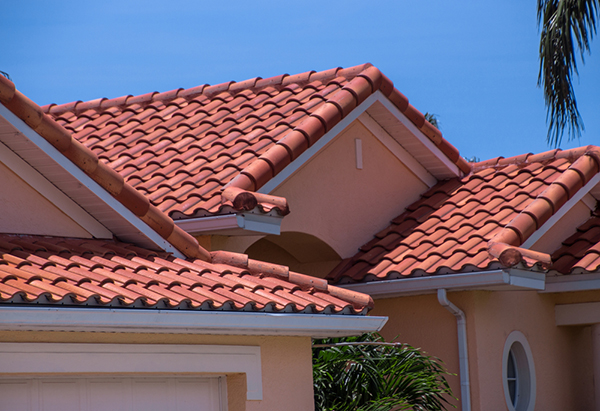The Best Roof for Hot Climates
Author: Barbara Horwitz-Bennett | June 26, 2025
In locales where summertime temperatures typically hover between 90 and 100 degrees Fahrenheit (or more), not all roofing materials are capable of withstanding the heat. So what's a Southern or Southwestern roofing contractor to do?
Fortunately, there are several options that residential contractors can recommend to their tropical and desert-dwelling customers. Read on to find out about the best roof for hot climates.

Tile and slate roofs
If a homeowner is willing to make the investment, clay or terra cotta tile is a sturdy and attractive roofing choice. Popular in areas like California and New Mexico, where it matches historic architecture, this material is baked in a kiln at high temperatures and emerges as a weather-resistant, long-lasting ceramic. The tile's curved shape enables the air to circulate, keeping the roof and interiors at a cooler temperature. Some roofing tiles are even Energy Star approved.
Similarly, slate is weather-resistant, long-lasting and fireproof, making it a great option for climates vulnerable to a fire risk caused by drought.
Terra cotta and slate both have the same drawbacks: they're very heavy and expensive. Customers who are willing to make the long-term investment will benefit from the roof's durability, longevity and lower cooling costs. Make sure you have the know-how and tools to handle tile and slate before offering these roofing options to homeowners.
Concrete, metal and rubber roofs
One option that offers some of the advantages of tile and slate for a reduced price tag is concrete. Concrete is a heat absorber and does a good job of protecting a home's interior from solar heat gain. Just like tile, concrete comes in wave-shaped S-tiles that optimize the airflow between the roof and decking, keeping the house cooler.
Although this may come as a surprise, metal is also a contender for the best roof for hot climates. Aluminum roofing systems that include airspace between the metal panels and the decking have been known to reduce cooling costs by as much as 20%. Steel roofing offers the same reflective benefits with increased durability. Encouraging roofing customers to choose a light color, or a cool roof, will also enhance their energy savings.
Other affordable roofing alternatives are rubber and membranes such as EPDM. While EPDM is not appropriate for a steep slope roof, rubber is available in a wide range of shingles that can mimic the look of slate and asphalt and be easily installed on steep slope projects.
Cool roofing options for asphalt
Asphalt is also now a major player in cool roofing options. Asphalt products that are specially designed to reflect sunlight and reduce temperatures in a home's attic can help homeowners save as much as 7 to 15% on their cooling costs.
When evaluating the best roof for hot climates, the choice depends on an individual homeowner's needs and a contractor's recommendation.
Ready to choose the best roofing materials for your client? QXO can help.